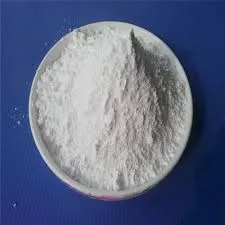Chemicals Used in Water Treatment
Water treatment is an essential process that ensures the safety and quality of drinking water and wastewater before it is released back into the environment. The treatment of water involves various physical, chemical, and biological processes. Among these, chemical treatment plays a significant role in addressing water contamination and enhancing water quality. In this article, we will discuss the primary chemicals used in water treatment and their functions.
1. Coagulants
Coagulation is one of the first steps in the water treatment process, aimed at removing suspended particles, colloids, and organic matter. Common coagulants include aluminum sulfate (alum), iron(III) sulfate, and polyaluminum chloride. These chemicals help to destabilize particles in the water, allowing them to clump together and form larger aggregates called flocs. The flocs can then be removed from the water during sedimentation and filtration processes.
2. Flocculants
After coagulation, flocculation is used to further enhance the aggregation of particles. Flocculants are often high molecular weight polymers that promote the formation of larger flocs, making them easier to settle and remove. These substances include polyacrylamide and various organic polycations. Flocculants are particularly effective in treating water with low turbidity, as they help improve the efficiency of solid-liquid separation.
3. Disinfectants
Disinfection is a critical step in ensuring that water is microbiologically safe for consumption. Various disinfectants are used, including chlorine, chlorine dioxide, ozone, and ultraviolet (UV) light. Chlorine is the most commonly used disinfectant due to its effectiveness and affordability. It not only kills pathogens but also provides residual disinfection, preventing bacterial regrowth in the distribution system. Chlorine dioxide is effective against a wider range of pathogens and does not form harmful disinfection byproducts. Ozone is a powerful oxidant that can remove organic contaminants, while UV treatment effectively inactivates microorganisms without adding chemicals to the water.
what chemicals are used for water treatment

4. pH Adjusters
The pH level of water is crucial in various treatment processes, as it affects the solubility and effectiveness of coagulants, disinfectants, and other chemicals. Acidic or alkaline substances, such as sodium hydroxide, sulfuric acid, or hydrochloric acid, are used to adjust the pH of water. Maintaining the optimal pH range can improve coagulation and disinfection efficiency and prevent corrosion in pipes and other infrastructure.
5. Oxidants
Oxidants are used to remove organic and inorganic contaminants from water. Common oxidants include potassium permanganate and hydrogen peroxide. Potassium permanganate can eliminate manganese and iron, while hydrogen peroxide is effective in breaking down organic pollutants and disinfecting water. The use of oxidants often reduces the concentration of harmful substances before further treatment and ensures cleaner effluent.
6. Corrosion Inhibitors
Corrosion of pipes and distribution systems can lead to contamination of treated water. To prevent this, corrosion inhibitors such as polyphosphates and silicates are added. These chemicals form a protective layer on the surfaces of pipes and equipment, thus minimizing corrosion and prolonging the lifespan of the infrastructure.
Conclusion
Water treatment is a complex process that relies on a variety of chemicals to ensure the safety and quality of water. Coagulants and flocculants remove suspended particles, disinfectants ensure microbiological safety, pH adjusters optimize chemical performance, oxidants eliminate contaminants, and corrosion inhibitors protect systems. Understanding the roles of these chemicals is essential for effective water treatment management, ultimately protecting public health and the environment. Through continued research and development, the effectiveness of these chemicals can be enhanced, leading to more sustainable and efficient water treatment solutions.

